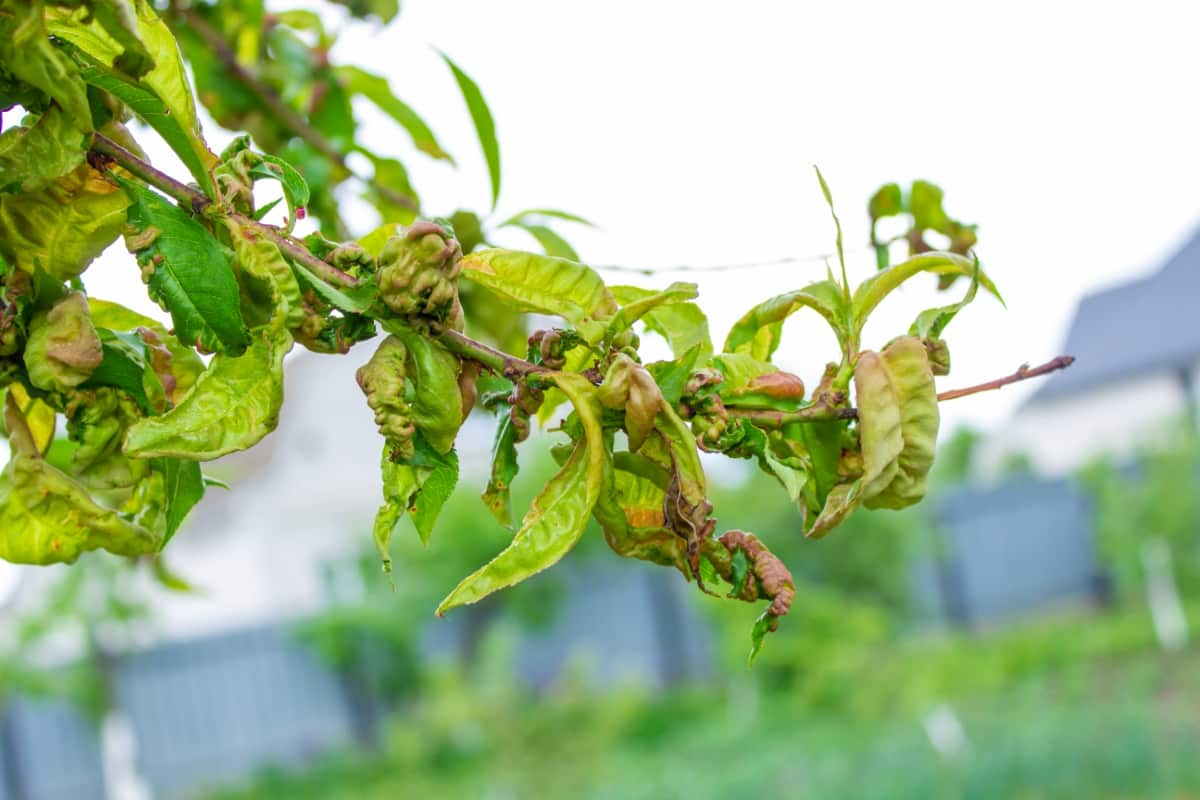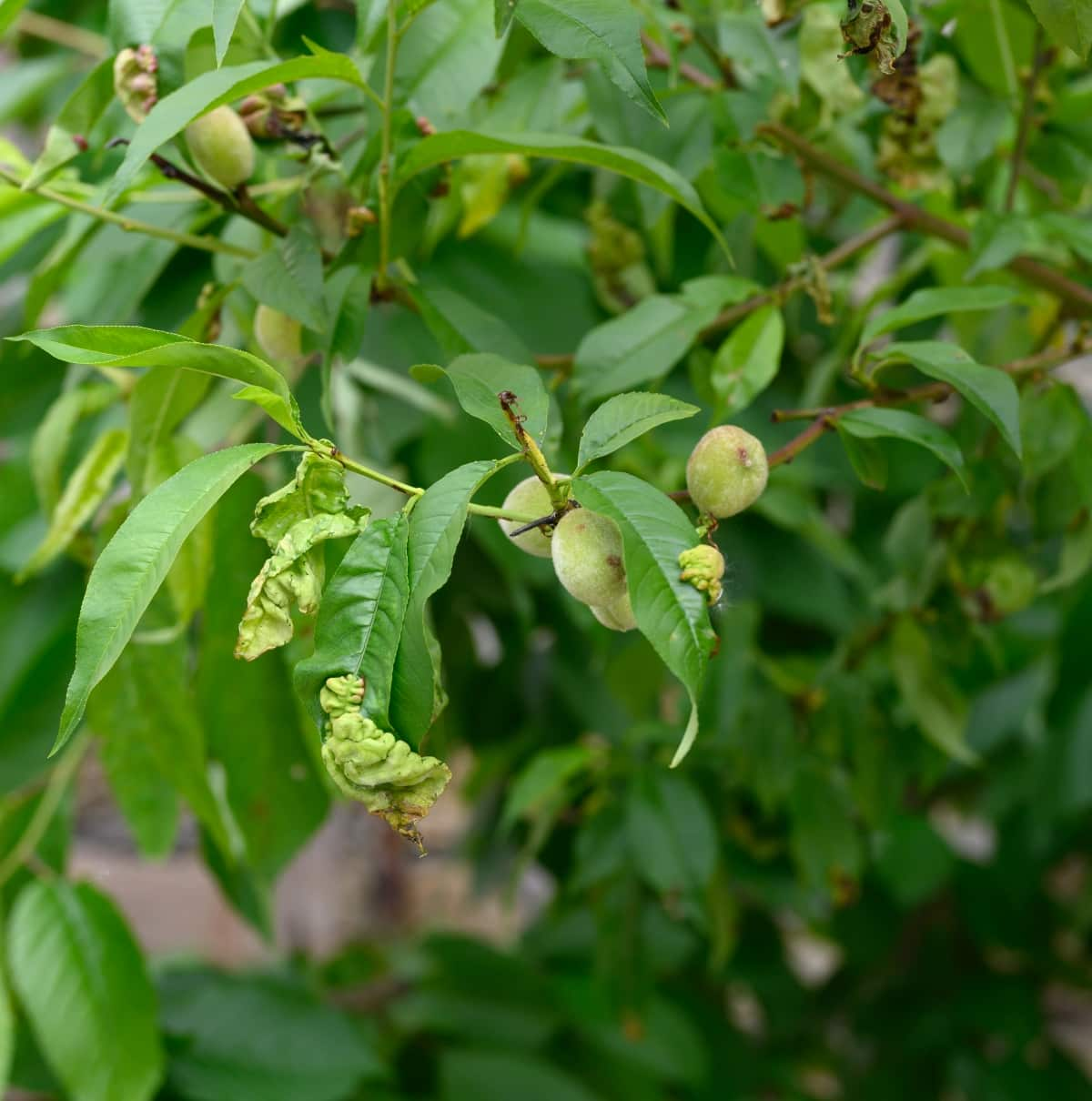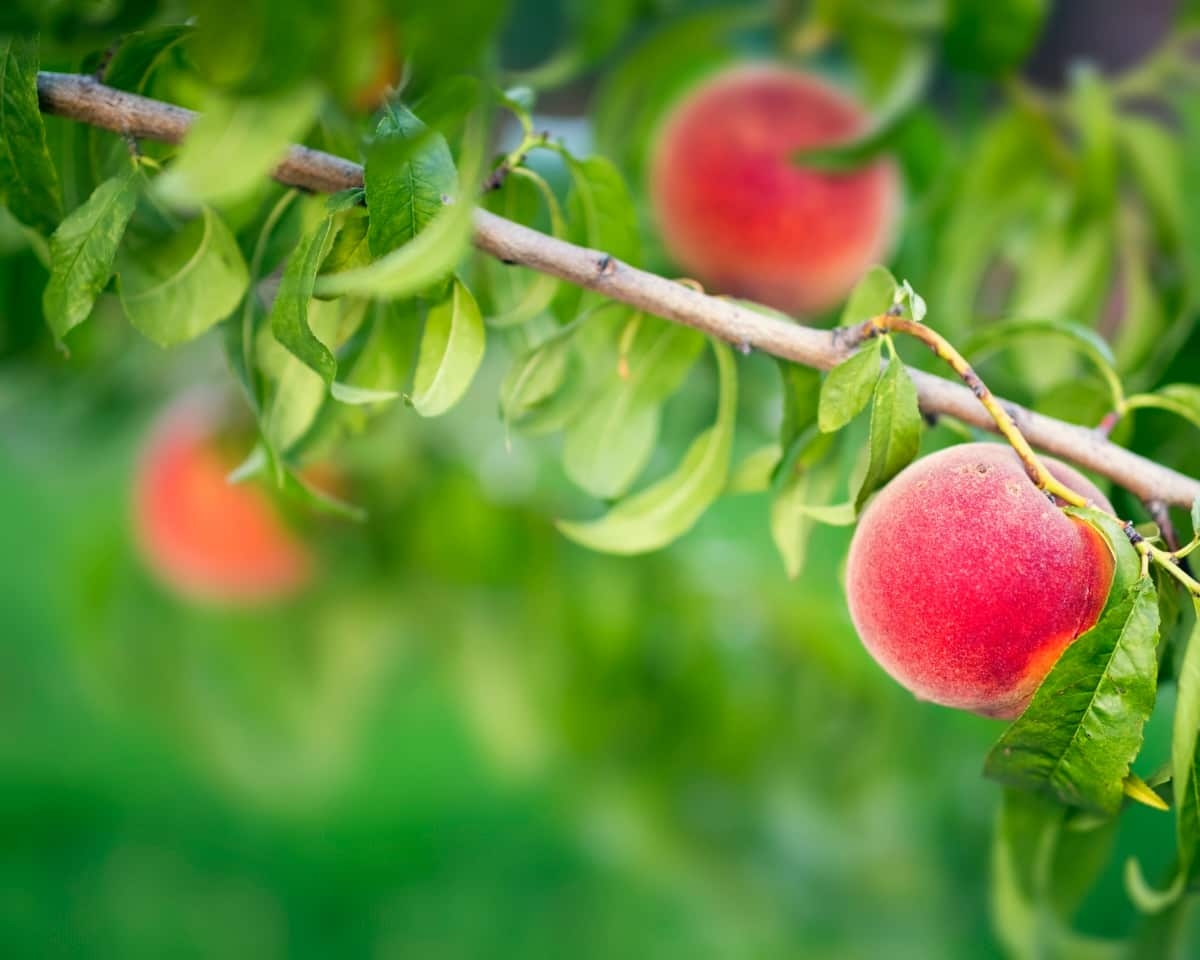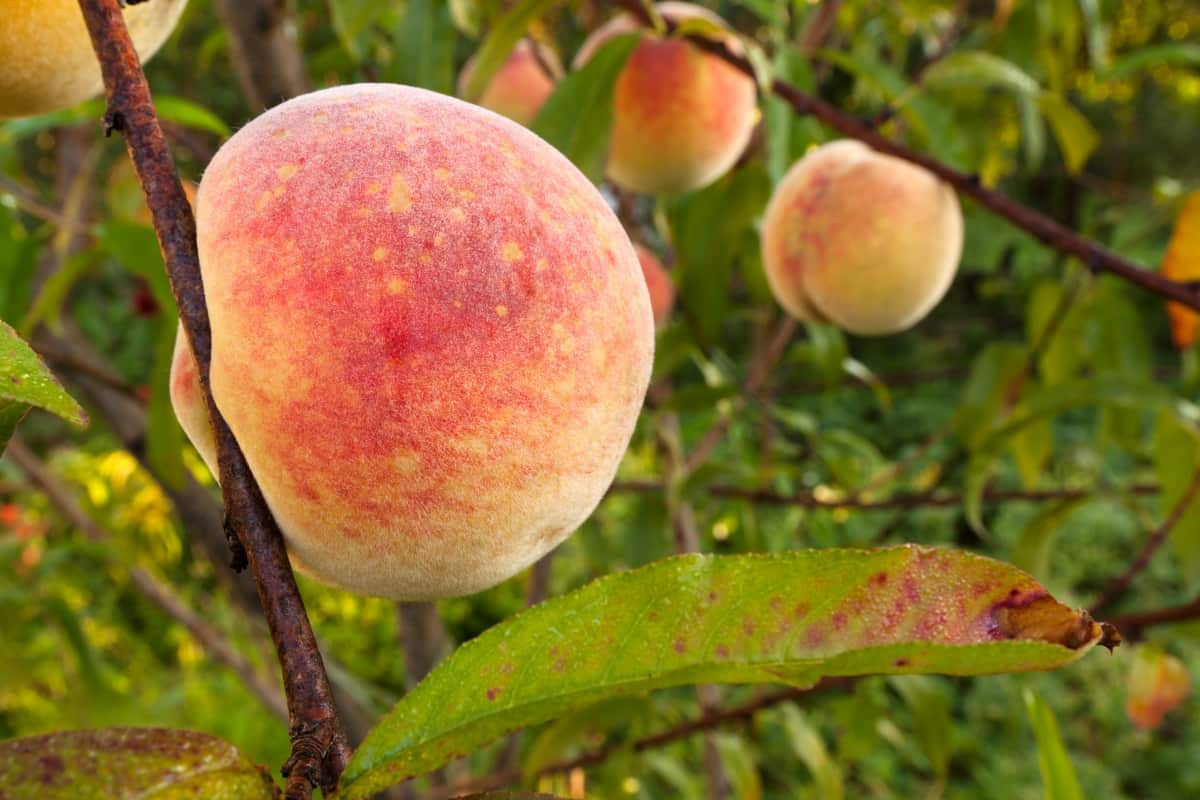Preventing Peach Leaf Curl is essential for maintaining the health of peach trees. This fungal disease, caused by Taphrina deformans, affects peach and nectarine trees, leading to distorted leaves and reduced fruit yield. Identification involves observing characteristic red, puckered leaves in spring. Symptoms can be severe if left untreated. By exploring these elements, peach growers can implement effective strategies to protect their orchards from this detrimental disease, promoting healthier and more robust peach tree cultivation.

How to Prevent Peach Leaf Curl
Understand the Causes of Peach Leaf Curl
The fungus Taphrina deformans causes peach leaf curl. Understanding the factors that contribute to its development is crucial for effective prevention. Key causes include,
- The fungus thrives in cool and wet conditions, making early spring a critical period for infection.
- Adequate moisture on the peach tree leaves is essential for the spores to germinate.
- Certain peach varieties are more prone to leaf curl than others. It’s important to choose resistant varieties if possible.
- Lack of proper air circulation around the peach tree can create an environment conducive to fungal growth.
- Overcrowded planting and dense foliage contribute to this issue.
- The fungus can overwinter in infected fallen leaves and twigs.
- Proper sanitation practices, such as removing and destroying infected debris, are essential to break the disease cycle.
How to Identify the Early Symptoms of Peach Leaf Curl
- Reddish Discoloration: Infected leaves show a reddish discoloration and distortion, particularly at the leaf margins. This is often the first noticeable symptom.
- Curling and Thickening: Affected leaves exhibit curling and thickening. They may become more brittle and less flexible.
- Blister-Like Pustules: As the infection progresses, blister-like bumps develop on the upper surface of the leaves. These pustules release spores, contributing to the spread of the disease.
- Premature Leaf Drop: Severe infections can lead to premature leaf drop, affecting the overall health of the tree.
- Twig and Bud Infections: In addition to leaves, the fungus can also infect twigs and buds, causing dieback.
Effective Strategies to Prevent Peach Leaf Curl
- Choose resistant peach varieties and ensure proper tree spacing to facilitate air circulation, reducing humidity around leaves.
- Implement regular fungicide applications during the dormant season, targeting peach tree buds.
- Apply fungicides specifically formulated for peach leaf curl, following recommended schedules and rates.
- Prioritize sanitation by promptly removing and destroying fallen leaves and twigs, which can harbor the fungus over winter.
- Consider applying a dormant oil spray in late winter to smother overwintering spores.
- Monitor weather conditions closely, as the fungus thrives in cool, wet environments; take preemptive measures during favorable periods.
In case you missed it: How to Control Peach Pests Naturally: How to Get Rid of Them with Natural and Organic Treatment

Integrated Pest Management Strategies for Preventing Peach Leaf Curl
Start by selecting resistant peach varieties and optimizing orchard hygiene, removing infected debris promptly. Use biological controls, such as introducing beneficial insects that prey on leaf-curl-causing pests. Implement cultural practices like pruning to enhance air circulation and reduce humidity. Monitor orchards regularly for signs of infection and employ weather-based forecasting systems to anticipate and address favorable conditions for fungal growth.
Utilize organic fungicides and, if needed, synthetic options judiciously, following IPM principles to minimize environmental impact. Encourage beneficial microorganisms in the soil for disease suppression. By combining these IPM strategies, growers can create a sustainable and effective approach to managing peach leaf curl, promoting both crop health and environmental stewardship in orchard management.
Organic Approaches to Preventing and Managing Peach Leaf Curl
Begin with selecting disease-resistant peach varieties suited to your region. Implement cultural practices such as proper pruning for air circulation and maintaining optimal tree spacing. Regularly inspect and remove infected leaves, fostering a clean orchard environment. Apply organic fungicides like copper-based formulations during the dormant season, targeting overwintering spores.
Introduce beneficial insects like predatory mites to control pest populations that can exacerbate leaf curl. Utilize organic soil amendments to enhance overall tree health and disease resistance. Complement these measures with neem oil sprays, which possess antifungal properties. By integrating these organic strategies, growers can effectively prevent and manage peach leaf curls while adhering to sustainable agricultural principles and producing healthy, chemical-free fruit.
Best Fungicides to Prevent Peach Leaf Curl
Copper-based fungicides, such as Bordeaux mixture or fixed copper products, are effective against Taphrina deformans—the causal agent of leaf curl. These fungicides create a protective barrier on peach tree buds, preventing fungal spore germination. Lime sulfur is another option, applied during the dormant season, to control overwintering spores. Synthetic options like chlorothalonil and mancozeb also exhibit efficacy against peach leaf curl, inhibiting fungal development.
In case you missed it: How to Control Okra Leaf Spot Naturally: How to Get Rid of This with Natural and Organic Treatment

It’s essential to follow recommended application timings and rates, especially during the pre-bud swell and bud break stages in early spring. Regular monitoring and adherence to integrated pest management practices, including proper sanitation and orchard hygiene, contribute to a comprehensive approach. Rotate fungicides to prevent resistance and consider organic alternatives for sustainable orchard management.
Cultural Practices for Preventing Peach Leaf Curl in Orchards
- Proper Pruning: Prune peach trees during the dormant season to remove infected branches and enhance air circulation. Open canopies promote sunlight penetration, reducing humidity levels and creating an unfavorable environment for the fungus.
- Adequate Spacing: Plant peach trees with sufficient spacing to facilitate air movement and minimize leaf wetness. This reduces the risk of fungal spore germination and spread.
- Sanitation Measures: Promptly remove and destroy fallen leaves and infected debris to eliminate overwintering sites for the fungus. This interrupts the disease cycle and prevents recurrence in the spring.
- Water Management: Avoid overhead irrigation, as wet foliage creates a conducive environment for fungal growth. Opt for drip or soaker hose irrigation systems to keep leaves dry.
- Select Resistant Varieties: Choose peach varieties with inherent resistance to leaf curl, reducing the likelihood of infection.
- Mulching: Use organic mulch around the base of peach trees to prevent soil splashing, which can carry fungal spores onto the lower branches.
- Timing of Fertilization: Time fertilization appropriately to promote healthy tree growth without encouraging excessive late-season foliage susceptible to infection.
Weather Conditions and Their Impact on Peach Leaf Curl Development
- Cool and Wet Springs: Peach leaf curl thrives in cool, wet conditions during early spring. The fungus requires moisture for spore germination, making periods of frequent rain or high humidity conducive to infection.
- Temperature Sensitivity: The optimal temperature for peach leaf curl development is around 50 to 70 degrees Fahrenheit (10 to 21 degrees Celsius). Warmer or colder extremes can limit the severity of the disease.
- Overwintering Survival: The fungus overwinters on infected debris. Mild winters with minimal freezing temperatures favor the survival of fungal spores, increasing the risk of infection in the subsequent spring.
- Wind and Air Circulation: Adequate air circulation is crucial for preventing leaf wetness. Windy conditions can help dry out leaves, reducing the risk of spore germination and infection.
- Frost Events: Late spring frosts can damage emerging leaves, making them more susceptible to infection. Protecting buds during frost events can mitigate the impact on peach leaf curl development.
In case you missed it: How to Control Betel Leaf Pests Naturally: Homemade Organic and Natural Recipes

Conclusion
In conclusion, preventing peach leaf curl requires a comprehensive approach addressing causes, symptoms, and treatment. Regular monitoring, strategic fungicide applications, and adapting methods to local weather conditions contribute to effective prevention. By integrating these measures, orchardists can cultivate healthy peach trees, minimizing the impact of this troublesome disease and promoting sustainable orchard management.
- Beneficial Insects in Pest Management
- Natural Solutions for Pest Control in Flower Gardens
- Types of Fungicides Used in Agriculture
- Common Issues in the Fruit Development Stage of Pomegranate Farming
- Fruit Development Issues in Papaya: Easy Solutions and Treatment
- Soil-Borne Diseases and How to Protect Your Plants
- Practices to Prevent Disease Spread in the Garden
- From Wilted to Thriving: How to Treat Root Rot Naturally in Houseplants
- Natural Remedies to Cure Brown Spots on Fig Tree Leaves